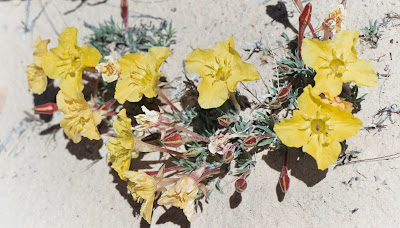 |
| "Welcome to Mississippi, It's Like Coming Home." |
Mississippi’s state slogan is one of the best and I found myself at home in Natchez while visiting two plantations which escaped the Union Army’s torches during the Civil War—Rosalie and The Burn.
I arrive at The Burn Antebellum Bed and Breakfast on a bright spring afternoon and meet my hostess, Bridget Green, who shows me to my room and arranges for a personal tour of the home. The Burn was given its unusual name by a Scottish gardener and refers to a babbling brook on the property, the word “burn” meaning “small stream or brook” in Old English and Scottish. Antebellum—great word by the way—is of Latin origin and means "before the war". In the southern United States "the war" means only one thing: The Civil War.
I have time for an early dinner before my tour and I choose the Magnolia Grill in the Under-The-Hill district on the Mississippi riverfront. My entrée of red fish almondine and fried sweet potatoes is tasty but my favorite part of the meal? Two large glasses of sweet tea.
 |
| Enjoy southern hospitality at The Burn Antebellum Bed and Breakfast. |
 |
| View of the Mississippi River from the Under the Hill District in Natchez. |
After dinner I return to the B&B and meet my tour guide Nell, an employee of the B&B. Nell serves me a glass of wine while I relax in the dining room and examine the pictures on the wall. Nell returns and introduces me to the people in those pictures. I meet John Walworth—original owner of The Burn—and his oldest surviving son Douglas, daughter Laura and her children, and daughter Lucy who died of yellow fever in 1853 at the age of 11. Through the years many descendants of the Walworth family have called The Burn their home.
One outstanding feature of the home is an unusual semi-spiral freestanding staircase. The floors, most of the window glass, and all the molding in the rooms are original to the house, along with the dining room table and china. The tour continues outside. Azaleas are blooming, two large fir trees stand guard over the rear patio, and a giant Live Oak graces the circular driveway. The Burn, a historical treasure, is the oldest original plantation in Natchez.
 |
| Semi-spiral free-standing staircase in The Burn's center hallway. |
 |
| Large Fir Trees guard the rear entrance to The Burn. |
After the tour I retire to my room, The Douglas Room, in a building called the Garconierre. This building, just a few steps away from the main house, was built to house the sons of the family after they reached the age of fourteen. In the antebellum south it was common practice to house teenaged sons in the Garconierre; the families could remain ignorant of the boys’ shenanigans and the boys' behavior didn’t disrupt the household.
I’ll bet there are more than a few families today who could benefit from having a Garconierre on the property.
****
The following morning I wake to birdsong, having spent a restful night in The Douglas Room—no teenaged monkey business occurring in the Garcionerre last night!
Hot coffee waits for me in a silver coffee server on the buffet table in the dining room. I pour a cup and take a seat at the head of a long table in this cavernous room with two fireplaces. I’m the only guest of the inn today but that doesn’t prevent the staff from serving a breakfast feast. The meal starts with fruit boiled in a sugary syrup and continues with eggs, bacon, grits, OJ and sesame seed rolls—a perfect way to greet the day.
After breakfast I drive the short distance to Rosalie Plantation where a docent greets me on the front porch of the mansion for the 10 o’clock tour. I learn that Rosalie was built by a native Pennsylvanian; he came to Mississippi in the early 1800’s and made his fortune in the timber business.
 |
| Opulence in the deep south. Rosalie Plantation. |
The Daughters of the American Revolution bought the mansion in the 1960’s and have retained many furnishings and period pieces from the mid-1800’s. The home is large and lavish. It’s hard to believe that some people lived so elegantly during that period of our nation’s history while others lived as homesteaders in meager claim shanties.
Like the Burn, Rosalie was not destroyed during the war. Rosalie’s superb location—high on a bluff overlooking the Mississippi River—led to its status as one of the Union Army’s headquarters.
And how did The Burn survive? The Union Army occupied the home and used it as a hospital for three years during the war. Sure enough, there’s a photo inside the home of Union Army soldiers posing on the front porch of The Burn.
While both these plantations represent a dark period in our nation’s history, the buildings themselves are remarkable examples of architecture and elegance in the antebellum south.
****
You can find more information on Natchez, Mississippi by visiting this site: http://www.visitnatchez.com/
Go on and make yourself at home in Mississippi. Visit The Burn—here’s their web address:
http://theburnbnb.com/
If you would like to read about a visit to another of the south's fascinating plantations, see this previous post: http://onedayinamerica.blogspot.com/2011/03/cane-river-country-louisiana.html
http://theburnbnb.com/
If you would like to read about a visit to another of the south's fascinating plantations, see this previous post: http://onedayinamerica.blogspot.com/2011/03/cane-river-country-louisiana.html



























